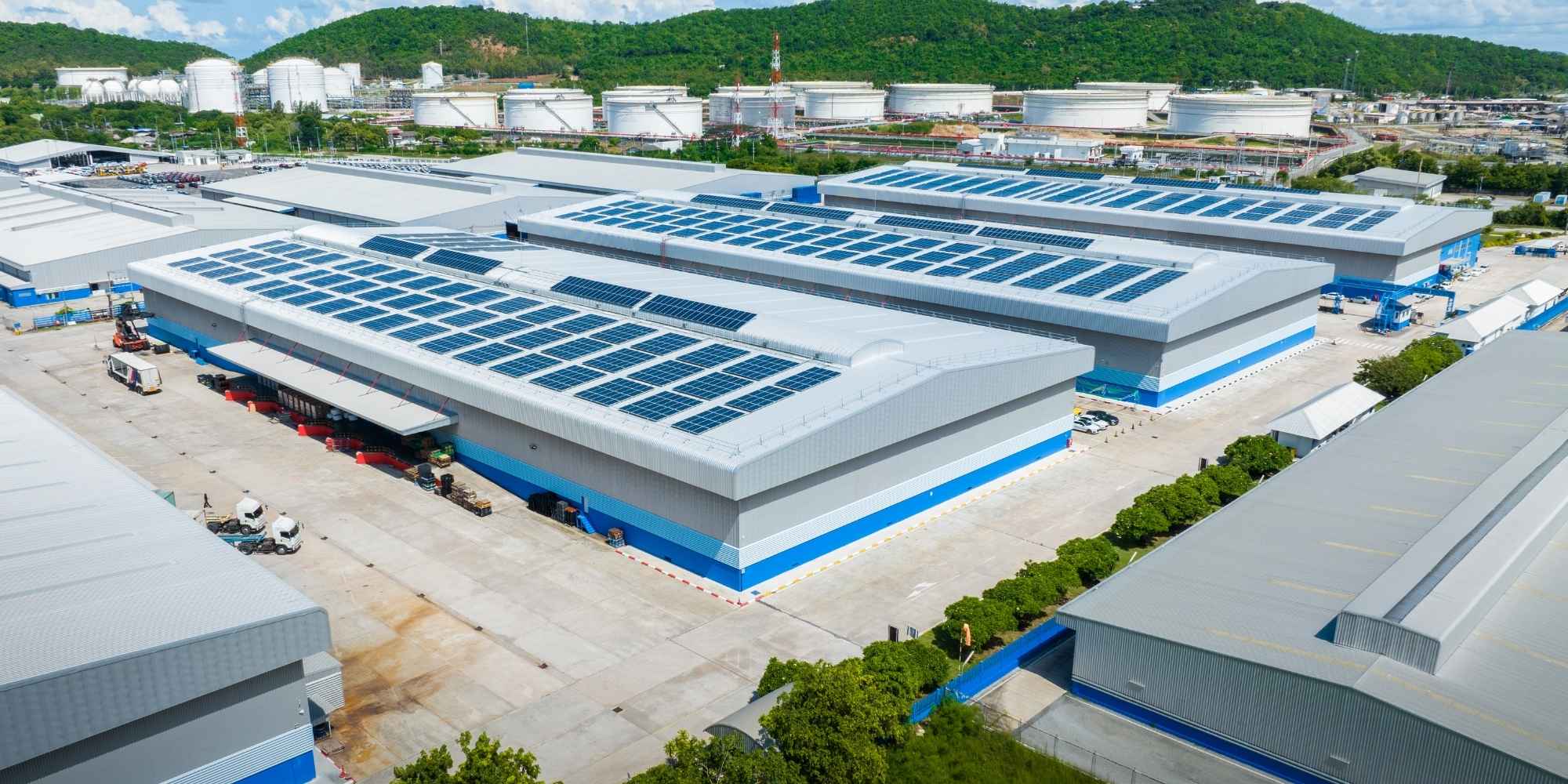
Sustainability in B2B Fulfillment
Jump right in: Sustainability in B2B Fulfillment
- Introduction
- 1: Optimizing Packaging for Sustainable
- 2: Embracing Green Transportation Solutions
- 3: Energy-Efficient Warehousing Practices
- 4: Sustainable Inventory Management
- 5: Sustainable Sourcing and Supplier Collaboration
- 6: Leveraging Technology for Sustainable Fulfillment
- 7: Employee and Stakeholder Engagement
- Summary & Key Points
Introduction:
Sustainability. It’s a term that gets tossed around a lot—sometimes so much that it loses its weight. But for businesses in eCommerce and beyond, sustainability is no longer optional. It’s a necessity. Today’s customers aren’t just browsing for the cheapest deal or fastest delivery; they’re looking for brands that care. They want companies that walk the talk—reducing waste, using eco-friendly materials, and proving they can run a business without wrecking the planet.
Now, this is where things get interesting for the B2B fulfillment industry. Fulfillment sits right at the heart of eCommerce operations, quietly doing the heavy lifting—getting products from warehouses to doorsteps. But that “quiet” work? It leaves a loud carbon footprint. Packaging, transportation, energy-guzzling warehouses—every step of the process has the potential to harm the environment if businesses aren’t careful.

Here’s the thing: sustainability isn’t just about doing good anymore. It’s also about doing well. Implementing greener practices doesn’t just save the planet—it cuts costs, streamlines operations, and builds trust with customers who care. You reduce waste, you lower expenses. You reduce emissions, you improve your reputation. It’s a win-win.
So, what can fulfillment companies do to make a real difference? It doesn’t have to mean overhauling everything at once. Small, strategic changes—like switching to smarter packaging, greener transportation, and energy-efficient warehouses—can add up quickly. And they’re changes your customers will notice.
In this article, we’ll explore exactly how B2B fulfillment businesses can make their operations greener, smarter, and more efficient. From optimizing packaging and embracing EV fleets to leveraging cutting-edge tech, we’ll break it down into practical, actionable steps that businesses can implement today. Because let’s face it—our customers, the planet, and the future demand it.
1. Optimizing Packaging for Sustainability
Packaging is one of the most visible aspects of the fulfillment process and it has a significant environmental impact. Excessive packaging materials contribute to waste and carbon emissions, with companies relying on non-recyclable or non-biodegradable materials.

What can B2B businesses do?
1. Use Materials That Actually Matter
Here’s the simple truth: plastic is out, and sustainable materials are in. But we’re not just talking about slapping “recyclable” on the box and calling it a day. Real progress means using materials like:
- Cardboard and Kraft paper: 100% recyclable and biodegradable. Plus, it looks sleek and professional.
- Biodegradable plastics: A solid alternative for businesses that still need flexible packaging.
- Compostable mailers: Great for lightweight shipments, and they break down naturally over time.
A study by McKinsey & Company found that 60% of consumers are willing to pay more for sustainable packaging. So, while switching materials might have upfront costs, it can also improve your bottom line by attracting eco-conscious clients.
2. Stop Wasting Space
You know what doesn’t make sense? Shipping air. Oversized boxes not only waste materials but also cost more to ship and store. The solution?
- Right-sized packaging: Implement systems that match box size to the actual product. Fulfillment giants like Amazon have automated machines for this, but smaller businesses can use scalable tools like Packsize or BoxSizer.
- Minimalist design: Ditch the unnecessary fillers, excessive branding, and bulky materials. Keeping it simple saves space, money, and the environment.
And here’s an added bonus: customers love minimalist packaging. It feels intentional, clean, and modern. No one’s complaining about fewer packing peanuts clogging their trash cans.
3. Encourage Reuse—Because Why Not?
What if your packaging didn’t have to be thrown away at all? That’s the beauty of reusable packaging. Think durable crates, returnable containers, or even boxes designed for multiple uses. Sure, it requires some planning, but it also:
- Reduces the need for new materials.
- Lowers long-term costs.
- Builds customer loyalty by showing you’re serious about sustainability.
Some forward-thinking companies offer discounts or credits when customers return their packaging. It’s a small incentive, but it works. And in the B2B world, reusability is especially effective for ongoing shipments between suppliers and retailers.
4. Eco-Friendly Labels Are the Cherry on Top
Ever thought about how your labels impact sustainability? Switching to:
- Soy-based inks: These are non-toxic, renewable, and much easier to recycle than petroleum-based inks.
- Water-based adhesives: Standard adhesives can mess with recyclability, but water-based alternatives keep packaging eco-friendly.
It’s a small tweak that shows attention to detail—and when combined with sustainable materials, it creates a package that’s fully planet-friendly.
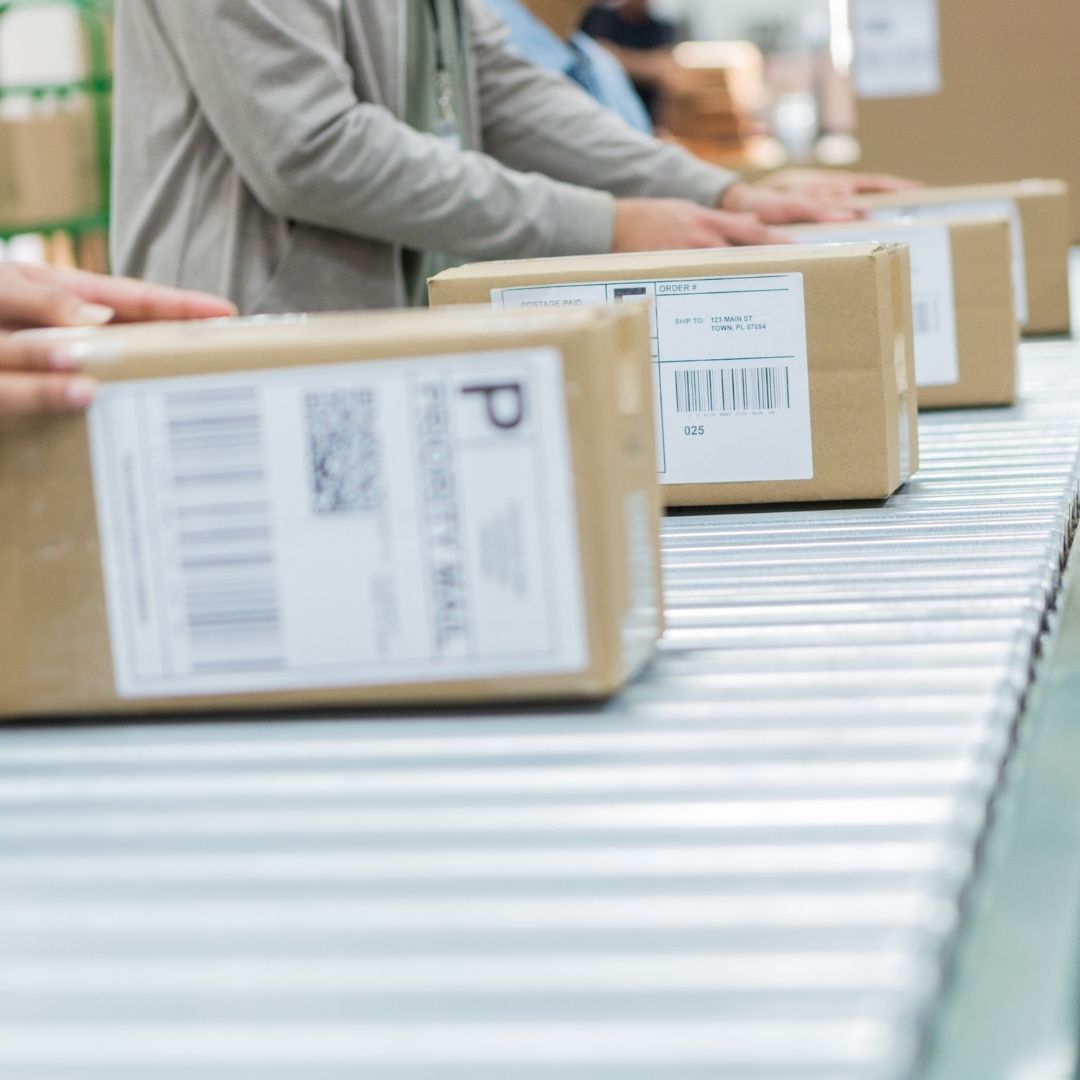
Why it Matters
Companies that adopt smarter, greener solutions aren’t just cutting costs and emissions; they’re positioning themselves as leaders in a world that’s demanding change. Plus, customers notice. A delivery that’s efficient, well-sized, and sustainably packaged isn’t just good for the environment—it’s a powerful reflection of your brand values.
2. Embracing Green Transportation Solutions
The transportation sector is one of the largest contributors to global carbon emissions. The Biden administration has taken on an ambitious target of 50% of all new vehicle sales by 2030 to be electric vehicles, offering tax credits to manufacturers and businesses that adopt these vehicles in their infrastructure.
In the context of B2B fulfillment, merchandise is transported over long distances, and the environmental impact on the organization is significant. Big players like Target, Walmart, and Amazon have all committed to adopting a large-scale electric vehicle (EV) for their supply chain trucks and delivery vans used for last-mile delivery. This is not something that every business can do but their efforts impact us all.
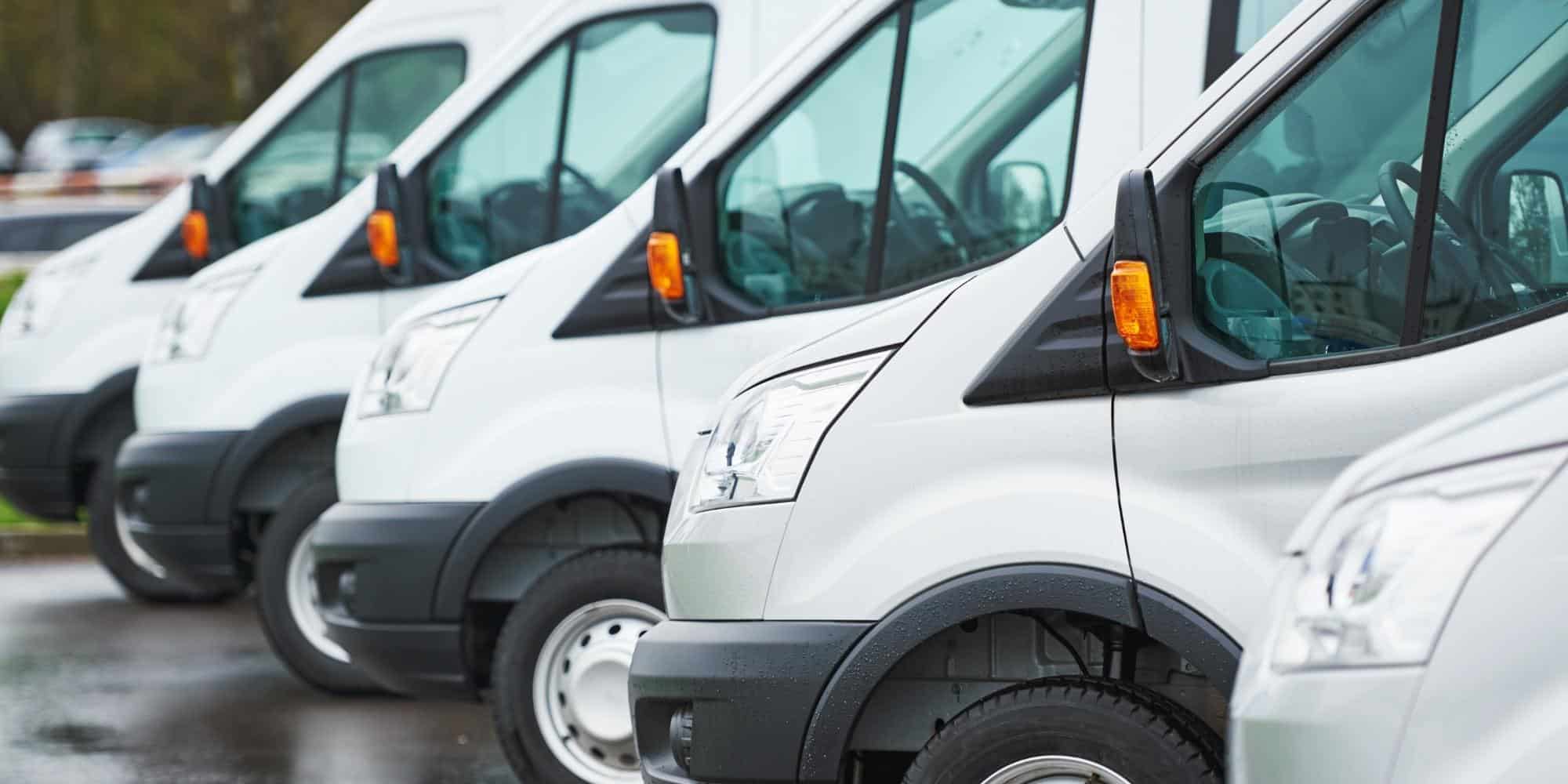
How to make transportation greener?
- Electric Vehicles (EVs): As EVs continue to improve in terms of range and affordability, incorporating electric trucks or vans into the delivery fleet is a viable option for reducing carbon emissions.
- Consolidate Shipments: Rather than shipping smaller loads over various trips, consolidate shipments to maximize vehicle capacity. This reduces the number of trips required, lowering emissions and costs.
- Route Optimization: Implement advanced route optimization software that minimizes fuel consumption by selecting the most efficient delivery routes, like Fleet Complete. This software can analyze factors like traffic, weather, and distance, helping businesses reduce unnecessary emissions.
- Carbon Offsetting: If eliminating emissions entirely is not feasible, consider carbon offset programs that invest in renewable energy projects or reforestation efforts to neutralize emissions.
3: Warehouses That Work Smarter, Not Harder
Warehouses are the unsung heroes of the fulfillment process—storing, sorting, and shipping products day in and day out. But let’s be real: they’re also energy guzzlers. Picture massive buildings running 24/7 with lights blazing, HVAC systems churning, and machines humming. It adds up quickly—not just on your energy bill but also on your carbon footprint.
The good news? Energy-efficient warehousing isn’t just for companies with deep pockets. Whether you’re a small fulfillment center or a multinational operation, there are smart, practical steps to make your warehouse greener and save some serious cash in the process.
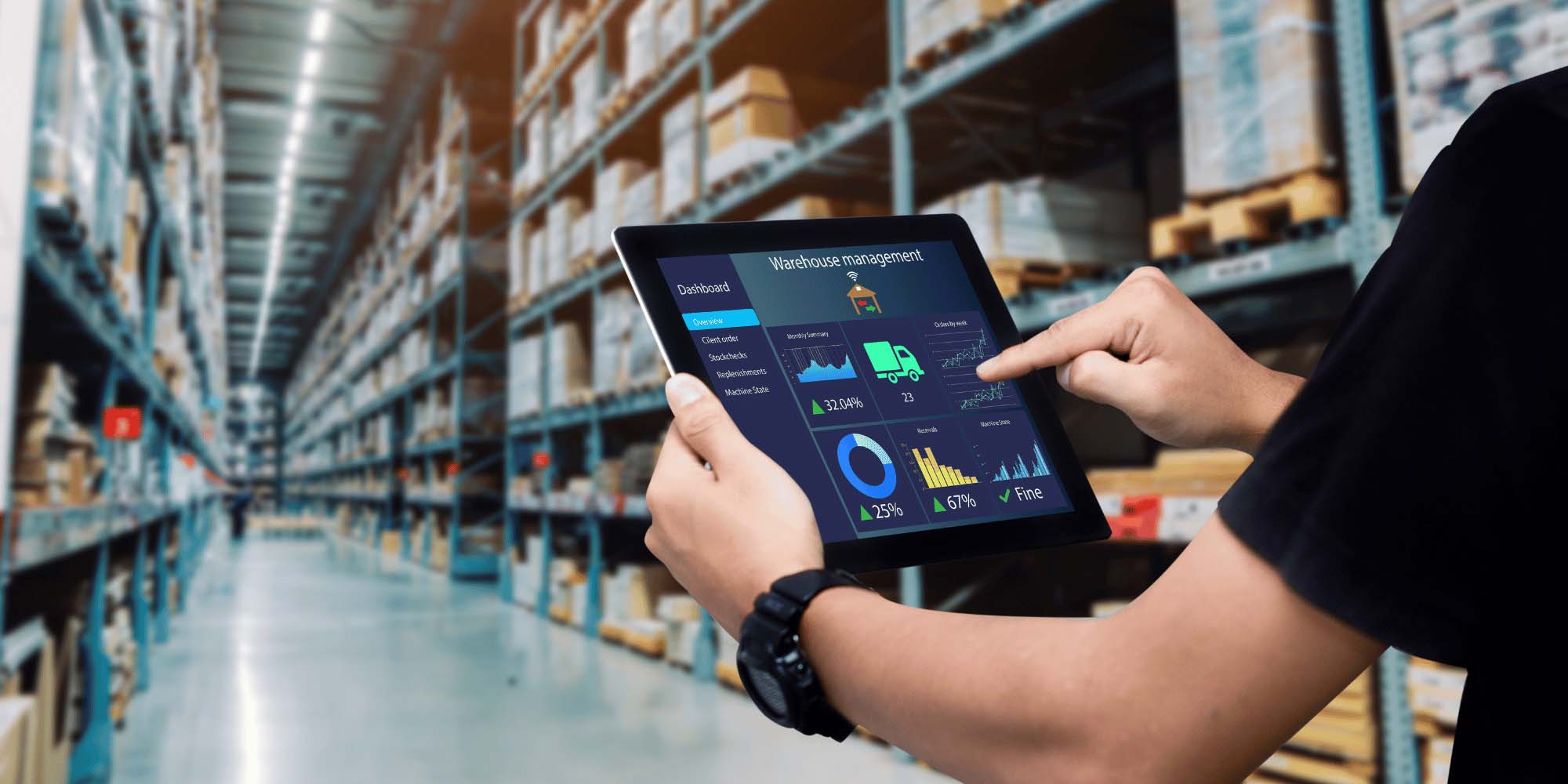
1. Switch to Renewable Energy (Solar Just Makes Sense)
It’s 2024—solar power is no longer futuristic. If your warehouse has a roof, you’re sitting on a golden opportunity. Installing solar panels can:
- Slash Energy Costs: Once the initial investment is covered, solar power can significantly reduce long-term electricity bills.
- Lower Carbon Emissions: No fossil fuels = cleaner energy.
- Take Advantage of Incentives: Many countries, like the U.S., Canada, and Australia, offer tax credits and grants for businesses that invest in renewable energy.
Not ready to install panels? Partner with renewable energy providers to source green power from wind, hydro, or solar farms. It’s an easy way to reduce your warehouse’s reliance on fossil fuels without major infrastructure changes.
2. Light the Way With LEDs
If your warehouse is still using fluorescent or incandescent lighting, you’re leaving money—and energy—on the table. LED lights use up to 80% less energy and last significantly longer. Pair them with:
- Motion Sensors: Lights automatically turn on and off based on occupancy, so you’re not lighting empty aisles.
- Smart Lighting Systems: These adjust brightness based on natural light, reducing energy use during daylight hours.
It’s a simple switch that pays off quickly. Plus, your warehouse will look brighter and more modern—always a bonus.
3. Smarter Heating and Cooling (Because Comfort Matters)
Warehouses can be tricky to heat and cool—large spaces, high ceilings, and constantly opening doors. But energy-efficient systems can keep your warehouse comfortable without burning through energy. Here’s how:
- Upgrade HVAC Systems: Modern, energy-efficient HVAC units consume less power while providing better temperature control.
- Use Smart Thermostats: Automate heating and cooling schedules based on usage patterns. Why heat the whole warehouse overnight when no one’s there?
- Insulate Like You Mean It: Proper insulation reduces heat loss in winter and keeps things cool in summer. Check windows, doors, and roofing for leaks or gaps.
Fun fact: According to Energy Star, well-insulated warehouses can save up to 20% on energy costs annually.
4. Automate and Optimize Operations
Automation isn’t just about speed—it’s also about efficiency. Robotics, conveyor systems, and AI-driven inventory management can minimize energy use by reducing idle time and optimizing space. Examples include:
- Robotics for Picking and Packing: Automated robots work faster and use less energy compared to traditional machinery.
- AI-Powered Inventory Systems: These optimize storage layouts, reduce the need for excessive lighting, and streamline workflow.
- Smart Sensors: IoT (Internet of Things) sensors can monitor energy use in real time and identify opportunities to reduce waste.
The result? A warehouse that runs smoother, faster, and cheaper—while using fewer resources.
5. Take Advantage of Natural Light
Who doesn’t love a little sunshine? Warehouses with skylights or large windows can use natural light to reduce reliance on artificial lighting during the day. It’s a simple upgrade that boosts energy efficiency and creates a better work environment for employees. Win-win.
4: Sustainable Inventory Management
Efficient inventory management is critical not just for optimizing stock levels but also for reducing waste in the supply chain. Holding onto excess stock or overproducing products leads to unnecessary consumption of resources and increased waste.
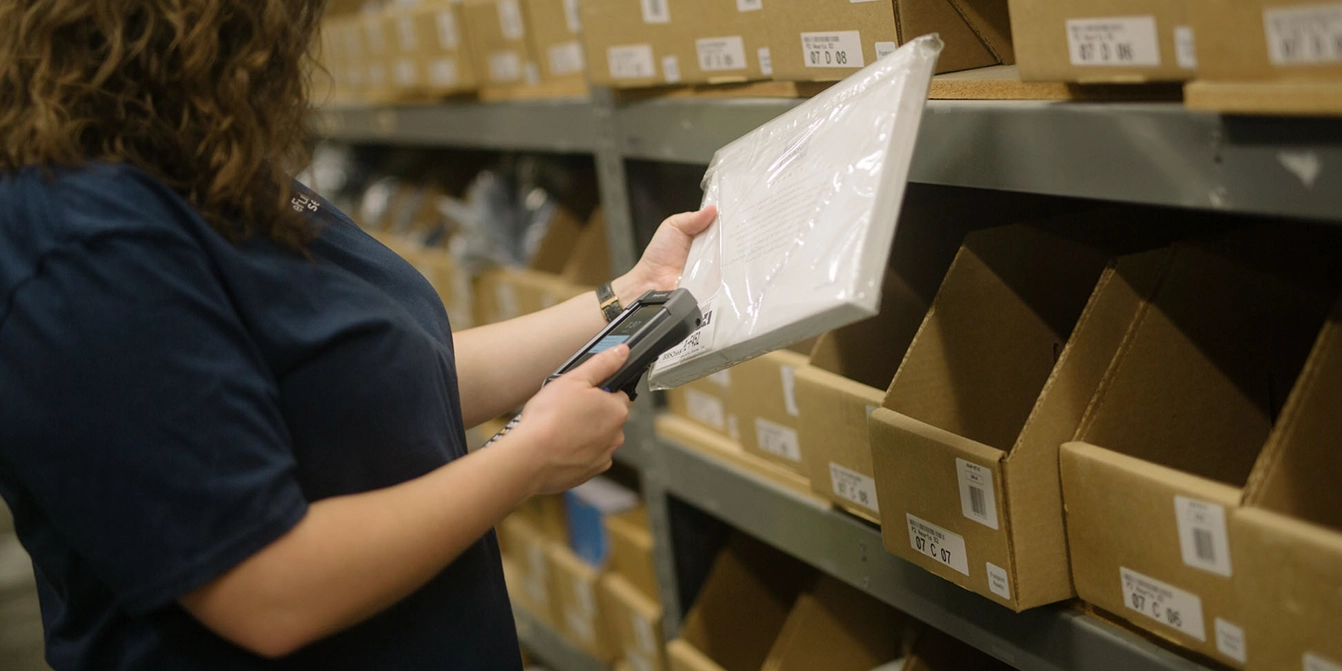
How to optimize inventory management?
- POD (Print-on-Demand) Inventory: This approach ensures products are produced and delivered only when an order is placed, effectively reducing overproduction and waste. Eliminating the need for large-scale storage facilities also lowers energy consumption and space requirements. Widely adopted in the apparel industry, this inventory model supports the production of unique, made-to-order designs, offering a sustainable and efficient solution.
- Inventory Forecasting: Utilize advanced data analytics to predict demand more accurately based on your sales. This helps in maintaining optimal stock levels, reducing the chances of excess inventory that might go unsold or become obsolete.
- Recycling and Repurposing Unsold Stock: Work with suppliers, resellers, and liquidators to recycle or repurpose unsold or outdated products. Donating items or converting them into secondary materials can minimize waste.
Save Yourself the Headache and Let us Handle Your Fulfillment!
See How Using a 3PL for saves Apparel sellers time. Get a Free Quote from eFulfillment Service Today!
5: Sourcing Smart: Partnering with Suppliers Who Care
Here’s the deal: sustainability doesn’t start when a product hits the warehouse shelves—it begins at the very first step of the supply chain. Where are your materials coming from? How are they made? Are your suppliers walking the talk on sustainability, or are they just along for the ride?
For B2B fulfillment, partnering with responsible suppliers is a game-changer. It’s like having teammates who share your goals—you can’t build a greener future alone, but together? That’s where the magic happens.
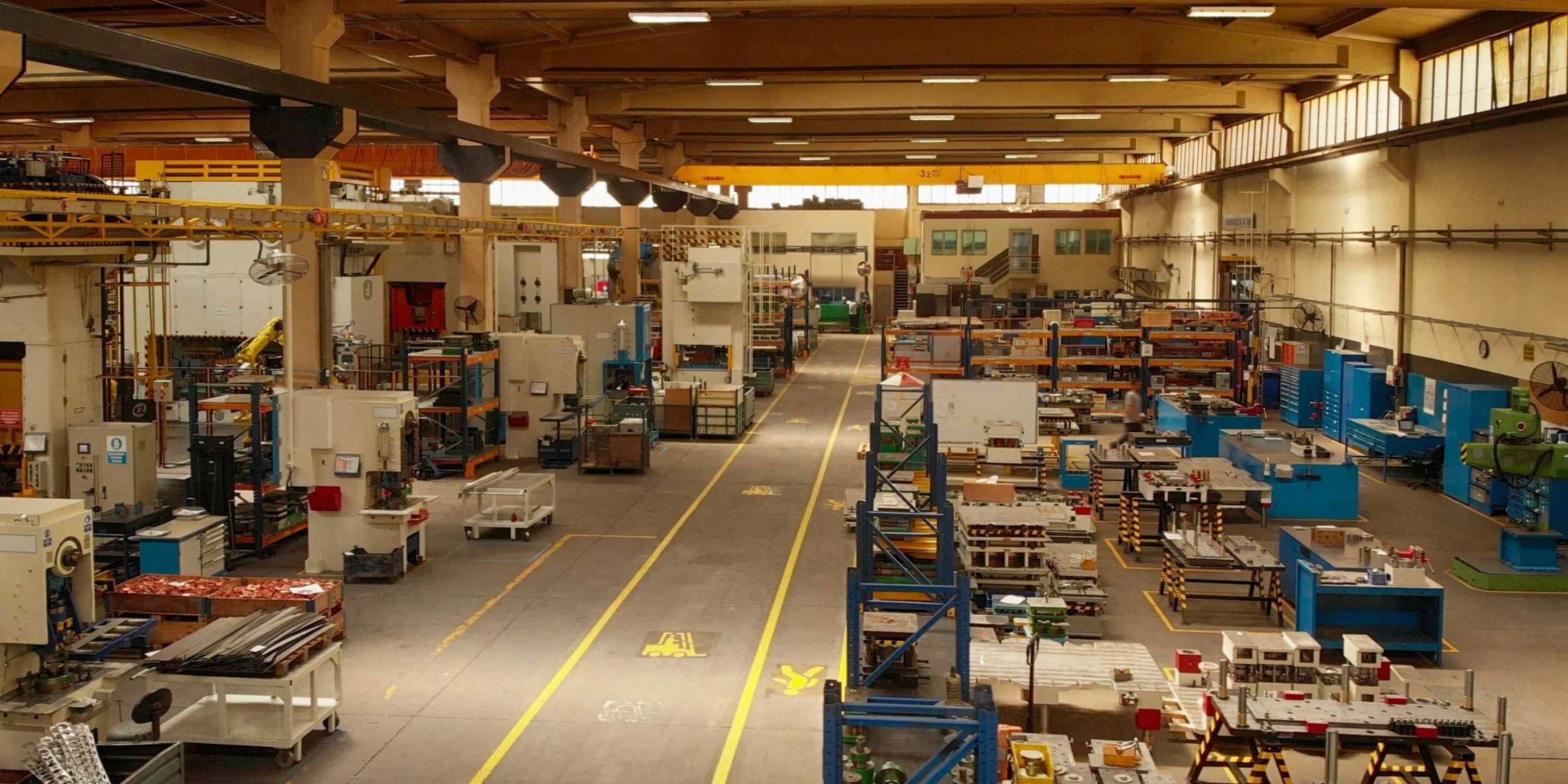
1. Choose Suppliers With a Green Game Plan
Finding the right suppliers is like choosing the right partners—they need to align with your values. Look for vendors who:
- Use Renewable Energy: Manufacturers running on solar, wind, or hydro power help reduce the carbon impact of your products before they even arrive.
- Minimize Waste: Suppliers who recycle their byproducts or use circular manufacturing processes (where waste becomes a resource) are worth their weight in gold.
- Offer Sustainable Materials: Prioritize partners who use responsibly sourced raw materials, like certified sustainable wood, recycled metals, or organic textiles.
Certifications are your best friend here. Look for:
- ISO 14001: This global standard ensures a supplier has effective environmental management systems in place.
- Fair Trade Certified: Guarantees ethical production and fair wages for workers.
- Forest Stewardship Council (FSC): Ensures wood and paper products come from responsibly managed forests.
These certifications aren’t just stamps on paper—they’re proof that your supply chain is doing its part for the planet.
2. Collaborate on Sustainability Goals
Sustainability isn’t a solo act. The best results happen when fulfillment providers and suppliers work together to tackle environmental challenges. So, ask yourself: How can you collaborate to make the entire process cleaner and more efficient?
Here are a few ideas:
- Joint Emissions Targets: Work with suppliers to set shared carbon reduction goals—like switching to greener transportation or optimizing production processes.
- Sustainable Packaging Initiatives: Collaborate to reduce packaging waste from the get-go. For instance, suppliers can ship products using eco-friendly materials or right-sized boxes.
- Product Lifecycle Planning: Encourage suppliers to design products with end-of-life in mind—think recyclable, biodegradable, or reusable options.
By treating sustainability as a team sport, you’ll amplify results and strengthen relationships with your suppliers. Plus, when you share goals, you’re more likely to hold each other accountable.
3. Transparency Is the New Currency
Let’s be honest—customers are skeptical of greenwashing. Saying your supply chain is sustainable is one thing; proving it? That’s what really builds trust. Transparency is key, and tools like blockchain technology can help.
With blockchain, businesses can trace every step of their supply chain in real time. You’ll know exactly where your materials come from, how they were produced, and how they traveled to you. This level of transparency not only reassures customers but also allows you to:
- Verify suppliers’ sustainability claims.
- Identify weak spots in your supply chain where improvements can be made.
- Share detailed, verifiable data with eco-conscious clients.
Platforms like IBM Food Trust and Everledger are already using blockchain to track products in industries like food, fashion, and electronics. It’s the ultimate trust-builder.
4. Prioritize Local Sourcing When Possible
Local sourcing is a win for both the environment and your operations. By working with nearby suppliers, you:
- Reduce Transportation Emissions: Shorter distances mean lower fuel consumption and carbon output.
- Support Local Economies: Partnering with local businesses strengthens the community and creates jobs.
- Streamline Lead Times: Shorter supply chains = faster delivery and fewer delays.
While it’s not always feasible for every product, even shifting a portion of your sourcing closer to home can make a noticeable impact.
6: Leveraging Technology for Sustainable Fulfillment
Technology has the power to revolutionize the way businesses approach sustainability. From inventory management to transportation organization, digital tools can provide valuable insights that drive efficiency and reduce environmental impact.
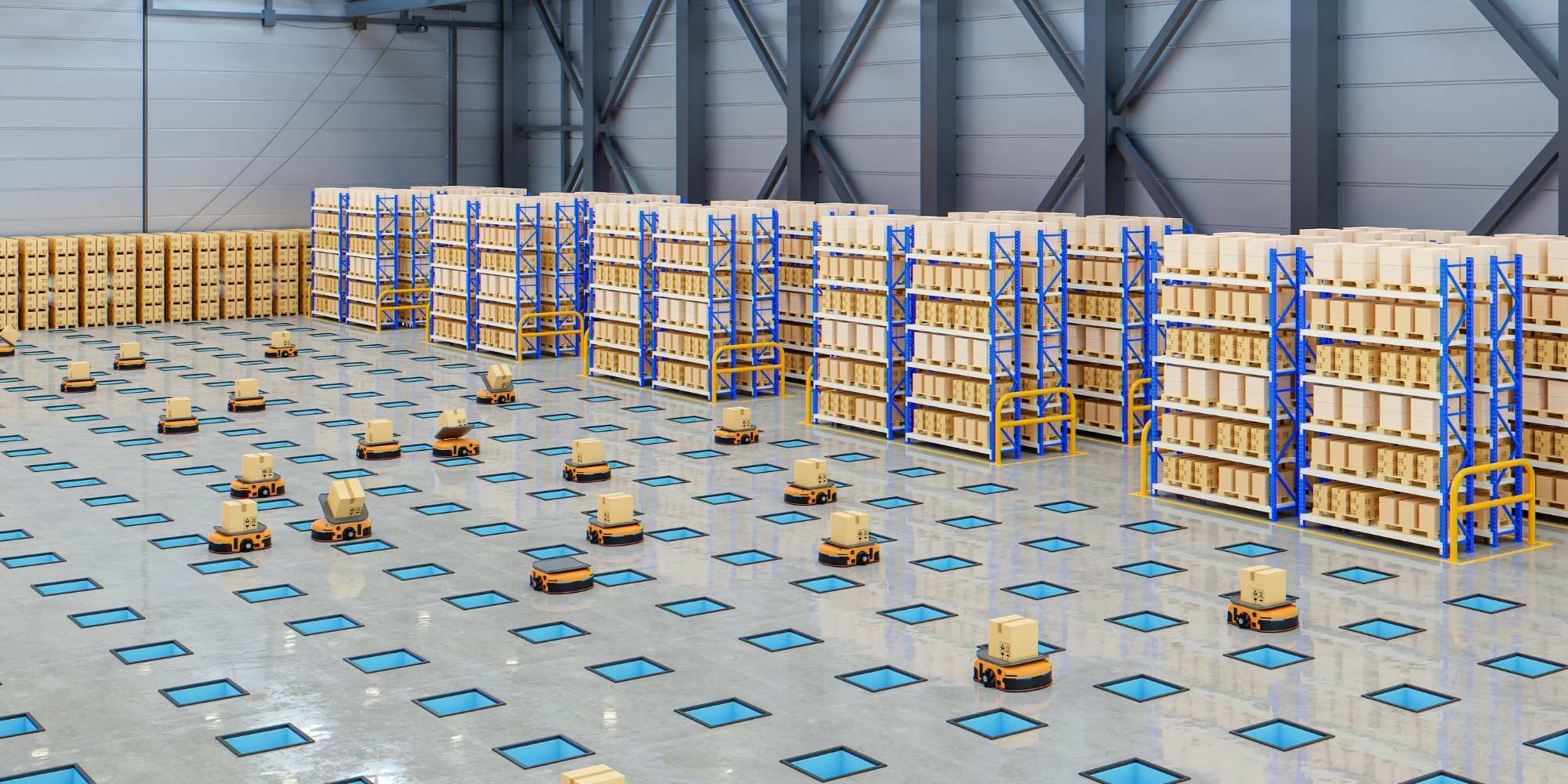
Technology-driven solutions include:
- Cloud-Based Platforms: These platforms can streamline processes, improve communication, and eliminate paper-based systems, which reduces waste.
- Data Analytics: Advanced data analytics tools can predict demand, optimize delivery routes, and help companies make informed decisions about sourcing, packaging, and inventory management.
- Blockchain for Transparency: Implementing blockchain technology allows businesses to track and verify the sustainability credentials of their suppliers. This creates transparency, ensuring that products are sourced ethically and sustainably.
Efficiency Tip: Partnering with an 3PL can free up your time to focus on what you do best, sell great products!
Get a Free Quote from eFulfillment Service and see how we can simplify your selling!
7: Sustainability Is a Team Effort: Engaging Employees and Stakeholders
Here’s the truth: sustainability doesn’t happen in a vacuum. You can roll out the greenest packaging, implement energy-efficient warehousing, and optimize transportation routes, but if your employees and stakeholders aren’t on board? You’re swimming against the tide.
Sustainability isn’t just a company strategy—it’s a culture. And like any good culture, it starts from within. When your team believes in your goals and feels empowered to contribute, the results are incredible. Employees become advocates, stakeholders become partners, and your mission to build a greener future becomes a shared purpose.
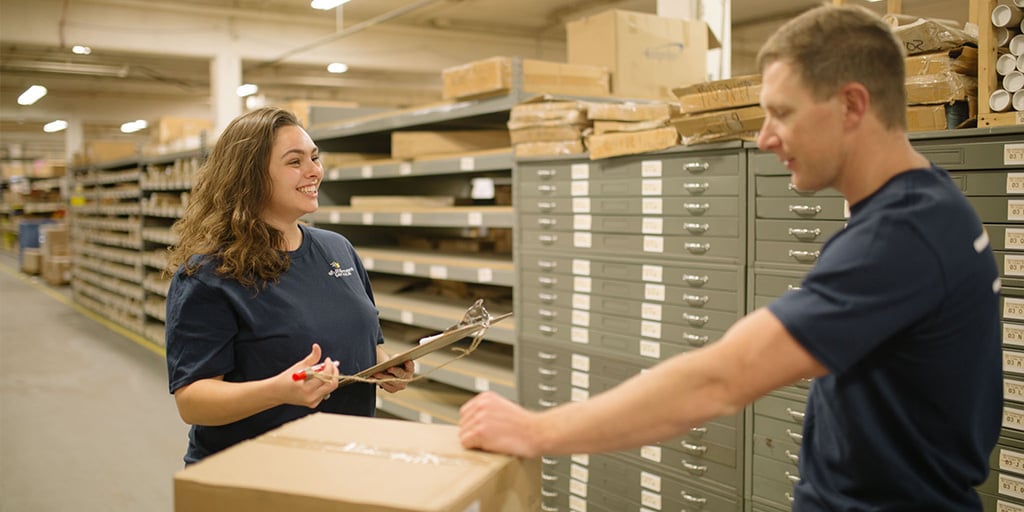
1. Make Sustainability Part of Your Company DNA
You can’t expect employees to care about sustainability if they don’t understand it. The first step is building awareness and making eco-friendly practices part of your company culture.
- Training and Workshops: Host sessions to explain your sustainability goals, why they matter, and how each department plays a role. Make it fun—think interactive challenges or games to reduce energy use or packaging waste.
- Set Clear, Achievable Goals: Employees love seeing progress. Break big sustainability initiatives into smaller milestones (like reducing energy consumption by 10% this year) and celebrate every win.
- Lead by Example: Leadership sets the tone. When team leaders and executives prioritize sustainability—whether it’s recycling, using reusable containers, or biking to work—it sends a message that these efforts matter.
Remember, it’s not about preaching—it’s about inspiring. When employees understand the “why” behind your initiatives, they’re far more likely to take ownership and drive change.
2. Reward Innovation and Effort
Want employees to go the extra mile? Recognize and reward their contributions. Sustainability thrives on creative solutions, and your team often has the best ideas for small, meaningful improvements.
- Eco-Champions: Create a “Green Team” of employees who lead sustainability efforts, share ideas, and motivate their peers.
- Incentives for Innovation: Offer rewards for employees who come up with new ways to reduce waste, lower energy consumption, or streamline operations. It could be anything from gift cards to extra time off.
- Friendly Competitions: Organize sustainability challenges like “Who can reduce office energy use the most this month?” or “Zero-Waste Week” where teams compete to eliminate single-use plastics.
It’s amazing how small incentives and a bit of healthy competition can turn sustainability into something employees enjoy.
3. Engage Customers and Suppliers
Sustainability isn’t just an internal effort—it extends to your customers, partners, and suppliers. When you engage your broader network, the impact grows exponentially.
- Empower Customers: Give customers eco-friendly options, like carbon-neutral shipping or packaging they can recycle. Even simple things like including “How to Recycle This Box” instructions make a difference.
- Share Your Progress: Transparency builds trust. Share regular updates on your sustainability milestones and goals with stakeholders, whether it’s through newsletters, social media, or reports.
- Collaborate With Partners: Encourage suppliers and partners to adopt greener practices. For example, you can create shared targets for emissions, waste reduction, or responsible sourcing.
Stakeholders want to see businesses taking action. When they know you’re committed to sustainability—and inviting them to be part of it—they’re far more likely to stick around for the long haul.
4. Build a Sense of Purpose
At its core, sustainability gives employees and stakeholders something to rally behind. It’s about creating impact beyond profit—something that matters to the world. When your team sees how their work contributes to reducing emissions, minimizing waste, or protecting resources, it fosters a sense of pride and purpose.
Here’s how you can reinforce that connection:
- Tell the Story: Share real-world examples of the difference your company’s efforts are making. Did switching to reusable packaging save thousands of trees? Highlight that impact.
- Show the Bigger Picture: Connect individual actions to company-wide goals. When employees know that recycling one shipment or optimizing one route contributes to saving hundreds of tons of CO₂ annually, it feels tangible.
- Celebrate Together: Whether it’s a small office win or a big sustainability milestone, celebrate it with your team. Recognition reinforces purpose and builds momentum for future efforts.
Summary
Let’s face it: sustainability in B2B fulfillment isn’t a passing trend—it’s a necessity. It’s what customers expect, it’s what the planet needs, and honestly? It just makes good business sense.
Throughout this guide, we’ve explored how fulfillment companies can build a greener, smarter, and more efficient future:
- Smarter Packaging reduces waste, saves money, and enhances customer satisfaction by using sustainable materials and right-sized designs.
- Green Transportation Solutions—like EVs, route optimization, and carbon offsets—help businesses cut emissions without sacrificing delivery efficiency.
- Energy-Efficient Warehousing tackles the energy-draining backbone of fulfillment with renewable energy, smart systems, and automation.
- Sustainable Inventory Management minimizes waste, reduces overstock, and keeps operations lean through smarter forecasting and innovative models like print-on-demand.
- Supplier Collaboration ensures sustainability begins at the source, by partnering with vendors who share your values and commitments.
- Employee and Stakeholder Engagement transforms sustainability into a culture, inspiring everyone to work toward a shared purpose.
Here’s the big takeaway: sustainability doesn’t mean perfection—it means progress. You don’t have to overhaul your entire operation overnight. Start small. Maybe you switch to recycled packaging, optimize a few delivery routes, or introduce a solar energy plan for your warehouse. Every step forward makes a difference.
The beauty of this approach? The benefits go far beyond the environment. You’ll lower costs, boost efficiency, and strengthen relationships with customers who are actively looking for brands they can trust.
As we move into a future where eco-consciousness shapes every buying decision, fulfillment companies that embrace sustainability now will lead the pack. Your efforts today won’t just protect the planet—they’ll build a business that’s prepared to thrive, no matter what comes next.

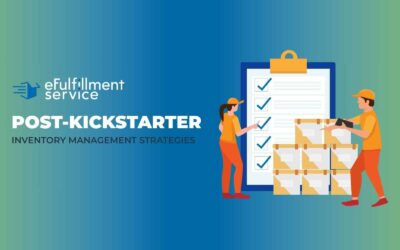
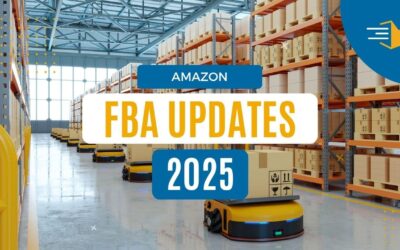
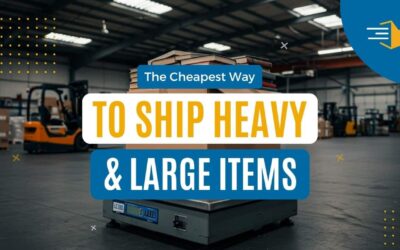
0 Comments